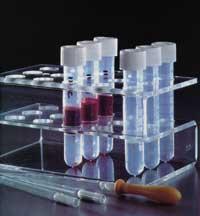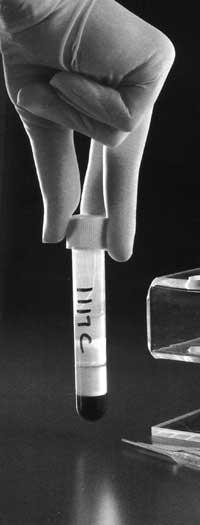Blood tests trying to decipher

In fact, the knowledge of what lies behind some initials of blood tests is of great importance to the patient, due to its special significance in evaluating a person's health status. And it will always be a specialist who confirms (or cancels) the causes of a disease, since the study of blood has become the object of study in a specific specialty, hematology. To approach this hieroglyphic analysis, laboratories, although they offer normal values for each of the results, the patient often does not know what is in blood tests in normal values, how high, what low, and what is most important, what is really the real meaning of that pile of figures. In the following lines, therefore, we will try to perform a brief analysis of the most demanded parameters in blood tests, along with a series of aids for the correct interpretation of the data.
Hemoglobin
This component of red blood cells is intimately linked to the amount of iron, so in case of anemia the concentration of hemoglobin in the blood decreases. Under normal conditions, blood hemoglobin should be between 13 and 17.5 grams per deciliter.
Hematis
This figure gives us the number of red blood cells or stains. The normal amount is 4.5-5.5 million mm per 3. Look! Often the figures are given in units, but whenever they multiply by 105.
Hematocrit
This figure tells us the proportion of red blood cells to the liquid part of the blood (as normal people would say if the blood is "thick" or "thin"). The figures normally contained in hematocrit range from 42% to 52%, and should never be less than 36. In recorded anemias and hemorrhages, hematocrit values decrease.
Leukocytes

Under normal conditions, the number of leukocytes ranges from 4,000 to 10,000, per mm 3, depending on age. And by specifying more analytical, leukocytes distinguish several groups or subtypes, each with their respective percentages, up to 100 altogether (canes, segments, basophils, eosinophils, lymphocytes and monocytes). In bacterial infections leukocytes increase and in viral or autoimmune diseases descend.
Globular sedimentation rate
(G.J.A) or "Belozidade". This figure measures the rate at which blood is deposited or "put" in the form of sediments in a vertically placed test. It has two values or measurements: the first hour (usually 2-8 mm) and the second (6-18 mm under normal conditions). It is higher in infectious, kidney, rheumatism, or after a heart attack.
Glucose (sugar)
In both blood and urine, when glucose levels are above 100 milligrams per deciliter, the doctor may suspect diabetes mellitus because in this disease the pancreas does not produce enough insulin hormones (and because of this shortage of insulin the blood glucose or glucose level increases). Normally the blood glucose ranges from 70-100 mg/dl.
Urea
It is one of the main products derived from the breakdown of proteins. It passes from blood to the kidneys and is removed with urine. The kidneys do not work when urea levels exceed 40 mg/dl.
Uric acid
Uric acid is just one of the residues of our body's metabolism. And when uric acid is high (normal figures are 3-7.5 mg per dL of blood) a disease called gout or severe kidney disease can be suspected.
Bilirubin
The measurement of this component may suspect liver injury or obstruction of the bile duct. The normal bilirubin level will not exceed 1 mg/dl. If the concentration exceeds 1.6 mg/dL, the skin becomes yellow. It is called jaundice or minority.
Total cholesterol. LDL and HDL cholesterol
Within this figure all lipoproteins containing cholesterol as a whole are left and not the same cholesterol that is not free in blood. Currently, in the analyses there is also a relationship or quotient between the fractions called LDL and HDL, a figure that is more accurate and reliable, since it is the one that best represents the risk of arterosclerosis.
The total cholesterol is between very wide margins, with a minimum or minimum of 150 mg/dl and a maximum or maximum of 220 mg/dl.
HDL cholesterol is also known as good or protective cholesterol because it collects excess cholesterol and takes it to the liver (to be expelled there). HDL figures range from 36 to 50 mg/dl. The function of LDL or bad cholesterol is to carry fat from the liver to the inside of cells and its amount ranges from 100-170 mg/dl.
Triglycerides
They are the main component of fats and lipids (especially fatty animals) that we eat as food (up to almost 95% of fats). Triglyceride levels should not exceed 160 mg per deciliter.
Transaminases (GOT, GPT)

They are enzymes that have the function of starting or accelerating chemical reactions, called transaminases because they transport chemical groups called amines from one substance to another.
GOT and GPT are the main types of transaminases for humans, and although their normal level may vary slightly in blood from one technique to another, tests are considered normal when transaminases do not exceed 40 units/liter.
They are mainly used to diagnose liver diseases (especially PGs), while in myocardial lesions, such as infarction, PGs are the ones that rise the most.





